Italian cheeses
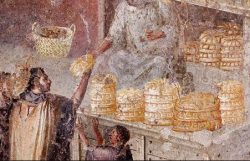 NOWADAYS Britain produces a greater variety of cheese than France – a far cry from the days of a generic cheddar (rather than a Farmhouse Cheddar) and tasteless rubbery “cream cheese.” The French still produce some of the world’s greatest and most famous cheeses – Camembert, Brie, Epoisses, Roquefort and many more … And Switzerland is home to the ancient Gruyere, a regular champion in the annual World Cheese Awards. But perhaps the greatest home of cheese – and certainly of cheeses that enhance, embellish, intensify and ornament our food – is Italy. Every region of Italy has its specialities, and Italian cheeses range from the hard, savoury, umami-rich Parmigiano and the multi-purpose Grana Padano to the meltingly soft and sweet Mascarpone, moving from antipasti to the main course to the dessert trolley.
NOWADAYS Britain produces a greater variety of cheese than France – a far cry from the days of a generic cheddar (rather than a Farmhouse Cheddar) and tasteless rubbery “cream cheese.” The French still produce some of the world’s greatest and most famous cheeses – Camembert, Brie, Epoisses, Roquefort and many more … And Switzerland is home to the ancient Gruyere, a regular champion in the annual World Cheese Awards. But perhaps the greatest home of cheese – and certainly of cheeses that enhance, embellish, intensify and ornament our food – is Italy. Every region of Italy has its specialities, and Italian cheeses range from the hard, savoury, umami-rich Parmigiano and the multi-purpose Grana Padano to the meltingly soft and sweet Mascarpone, moving from antipasti to the main course to the dessert trolley.
Italy produces approximately 600 different types of cheeses. Some of the most famous cheeses date back centuries – 2,000 years in the case of Pecorino Romano. Several have DOP protected status. Everyone knows the rich and delicious pecorino and the endlessly versatile parmesan – whether as a sprinkle on your pasta in an Italian restaurant or a generous grating from a handsome chunk on your home-made salad or risotto. So here are some other Italian cheeses, mainly well-known but some less familiar regional examples.
Asiago is a cow’s milk cheese, first produced in the town that gives it its name. It has a delicate and nutty flavor and a different texture, from smooth to crumbly, according to how old it is. When it’s fresh it’s smooth, and as it ages it advances to crumbly. Asiago is made from creamy cow’s milk from the Vicenza province. It’s a DOP cheese and there is a certificate, issued by a dedicated association, which guarantees that genuine Asiago cheese meets quality standards and that the people who make it adhere to strict guidelines.
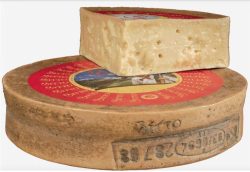 Bitto is an ancient Alpine cheese from Lombardy’s high Valtellina Mountains. It is a hard or semi-hard cheese which is unique because it contains milk from the nearly extinct Orobic goat as well as cow’s milk. It is a DOP cheese named after the Bitto river. Cheese experts (and lovers of this cheese, like the actor and food enthusiast Stanley Tucci) attribute its uniqueness to hand milking, high elevation pasturelands, Alpine biodiversity, and no use of enzymes, additives, or preservatives in the feed for the cows.|The addition of the goats milk allows the cheese to be aged for 10 years or longer. A true Bitto, with the Orobic goats milk, is rare and very expensive.
Bitto is an ancient Alpine cheese from Lombardy’s high Valtellina Mountains. It is a hard or semi-hard cheese which is unique because it contains milk from the nearly extinct Orobic goat as well as cow’s milk. It is a DOP cheese named after the Bitto river. Cheese experts (and lovers of this cheese, like the actor and food enthusiast Stanley Tucci) attribute its uniqueness to hand milking, high elevation pasturelands, Alpine biodiversity, and no use of enzymes, additives, or preservatives in the feed for the cows.|The addition of the goats milk allows the cheese to be aged for 10 years or longer. A true Bitto, with the Orobic goats milk, is rare and very expensive.
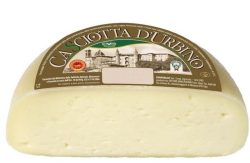 Casciotto is an aged or semi-aged soft cheese in a cylinder shape with a distinct taste made from any type of milk. The origins of this cheese are actually quite recent. Initially, it was made mostly with sheep’s milk during the colder months. Later it was prepared with different types of milk, depending on the region. It is said to have been invented mainly as an alternative to pecorino – with the aim of making a cheese that was sweeter and more delicate, but also faster and easier to prepare. There are many types of specialty caciotta cheese – from the ‘affogato’ (drowned) and the ‘colorato’ (coloured) varieties to the ‘aromatizzato’ (herb-flavoured) versions. The only DOP caciotta is the Casciotta di Urbino, from the Marche region, which is made with 70-80 per cent sheep’s milk and the remaining 20-30 per cent with cow’s milk. It is utterly delicious –and not to be confused with Caciocavallo, which is a stretched-curd cheese made out of sheep’s or cow’s milk from Southern Italy; shaped like a teardrop, it is similar in taste to the aged Provolone, with a hard edible rind.
Casciotto is an aged or semi-aged soft cheese in a cylinder shape with a distinct taste made from any type of milk. The origins of this cheese are actually quite recent. Initially, it was made mostly with sheep’s milk during the colder months. Later it was prepared with different types of milk, depending on the region. It is said to have been invented mainly as an alternative to pecorino – with the aim of making a cheese that was sweeter and more delicate, but also faster and easier to prepare. There are many types of specialty caciotta cheese – from the ‘affogato’ (drowned) and the ‘colorato’ (coloured) varieties to the ‘aromatizzato’ (herb-flavoured) versions. The only DOP caciotta is the Casciotta di Urbino, from the Marche region, which is made with 70-80 per cent sheep’s milk and the remaining 20-30 per cent with cow’s milk. It is utterly delicious –and not to be confused with Caciocavallo, which is a stretched-curd cheese made out of sheep’s or cow’s milk from Southern Italy; shaped like a teardrop, it is similar in taste to the aged Provolone, with a hard edible rind.
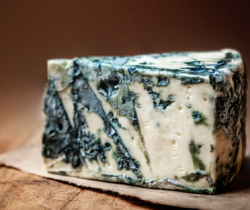 Gorgonzola is another cheese which is believed to date back to Roman times, when herds of cows were taken from the Alps to the Po river to graze near a city called Gorgonzola and fed on grass called quartirolla. It is said the cheese manufacture was born out of necessity because of the overwhelming number of cows there. There is another legend that claims the origins of this famously powerful sweet and spicy blue cheese are in the 15th century when a cow-herder abandoned his work to spend time with his lover. He is said to have thrown curd from the morning into the previous evening’s curd, inventing a cheese that stays soft even after it has aged. Cheesemakers puncture the cheese with sticks to dry it out, and this creates space for mould to grow inside. DOP Gorgonzola must be made exclusively from cows raised in Lombardy or Piedmont.
Gorgonzola is another cheese which is believed to date back to Roman times, when herds of cows were taken from the Alps to the Po river to graze near a city called Gorgonzola and fed on grass called quartirolla. It is said the cheese manufacture was born out of necessity because of the overwhelming number of cows there. There is another legend that claims the origins of this famously powerful sweet and spicy blue cheese are in the 15th century when a cow-herder abandoned his work to spend time with his lover. He is said to have thrown curd from the morning into the previous evening’s curd, inventing a cheese that stays soft even after it has aged. Cheesemakers puncture the cheese with sticks to dry it out, and this creates space for mould to grow inside. DOP Gorgonzola must be made exclusively from cows raised in Lombardy or Piedmont.
Mascarpone is best-known these days as a key ingredient in the famous Tiramisu pudding. It is a decadent triple-cream cheese which is sweet, fresh, mild and spreadable. It is made from cow’s milk and originates in the Lombardy region.
Mascarpone works well in savoury or sweet dishes. It pairs happily with brandy, espresso and chocolate and makes the simplest dish of fresh fruit feel luxurious.
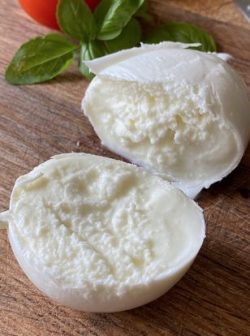 Mozzarella di Bufala is best known as a key component of pizza and one of the ingredients of a classic salad with tomatoes and basil. It can be made from either water buffalo or cow’s milk. The name comes from the word “mozza” which means to cut and refers to the slicing of the milk curd during the process of making it. It comes in a variety of sizes and shapes from small balls to braids. It has a mild, creamy texture and white porcelain skin and tastes mild, sour, and milky. Mozzarella di Bufala from buffalo raised in Lazio and Campania has DOP status. There is a herd of water buffalo near Yeovil in Somerset – under the tradename Buffalicious, the farm produces a very good mozzarella, as well as buffalo ice cream, yoghurt, burgers and more.
Mozzarella di Bufala is best known as a key component of pizza and one of the ingredients of a classic salad with tomatoes and basil. It can be made from either water buffalo or cow’s milk. The name comes from the word “mozza” which means to cut and refers to the slicing of the milk curd during the process of making it. It comes in a variety of sizes and shapes from small balls to braids. It has a mild, creamy texture and white porcelain skin and tastes mild, sour, and milky. Mozzarella di Bufala from buffalo raised in Lazio and Campania has DOP status. There is a herd of water buffalo near Yeovil in Somerset – under the tradename Buffalicious, the farm produces a very good mozzarella, as well as buffalo ice cream, yoghurt, burgers and more.
Ricotta is a light, white, creamy, sweet, fresh cheese made from sheep’s milk. The name means “recooked.” It is used in many Italian desserts and is a versatile ingredient for cakes and puddings. It is an essential ingredient in Sicily’s famous cannolis and the Pastiera, an Easter dessert from Naples. Some Ricottas have DOP status – Ricotta Romana DOP must use sheep’s milk from Massese, Sarda, Sopravvissana, and Comisana breeds raised exclusively in the Lazio region.
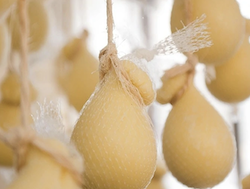 Scamorza is a sheep and cow’s milk cheese from Campania, Molise, and Puglia. It’s a chewy, stringy, semi-soft, white cheese with a smoky, milky flavor. It has a distinctive pear shape, similar to provolone, another cheese from southern Italy. In the final stages of the cheesemaking process, it is hung in strips to ripen for around two weeks, after which it is either smoked or sold as is. It is versatile in cooking, melting well, and is used in a variety of baked dishes.
Scamorza is a sheep and cow’s milk cheese from Campania, Molise, and Puglia. It’s a chewy, stringy, semi-soft, white cheese with a smoky, milky flavor. It has a distinctive pear shape, similar to provolone, another cheese from southern Italy. In the final stages of the cheesemaking process, it is hung in strips to ripen for around two weeks, after which it is either smoked or sold as is. It is versatile in cooking, melting well, and is used in a variety of baked dishes.
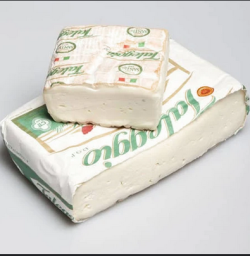 Taleggio is a semi-soft DOP cheese from Val Taleggio in Lombardy – hence the name. It’s a semi-soft, tangy cheese with a white interior and a pinkish-grey rind. It used to have a reputation as an aphrodisiac and the notorious lover of who knows how many women, Giacomo Casanova is said to have eaten Taleggio before undertaking his various romantic conquests. It is a delicious cheese in many dishes, wonderful grated on salads, and pairs with both white and red wines.
Taleggio is a semi-soft DOP cheese from Val Taleggio in Lombardy – hence the name. It’s a semi-soft, tangy cheese with a white interior and a pinkish-grey rind. It used to have a reputation as an aphrodisiac and the notorious lover of who knows how many women, Giacomo Casanova is said to have eaten Taleggio before undertaking his various romantic conquests. It is a delicious cheese in many dishes, wonderful grated on salads, and pairs with both white and red wines.
Pictured: A fresco from Pompeii showing a Roman bakery; Bitto, a selection of Caciottos, Scamorza, Taleggio, Gorgonzola, and Somerset’s own water buffalo and their Buffalicious Mozzarella.